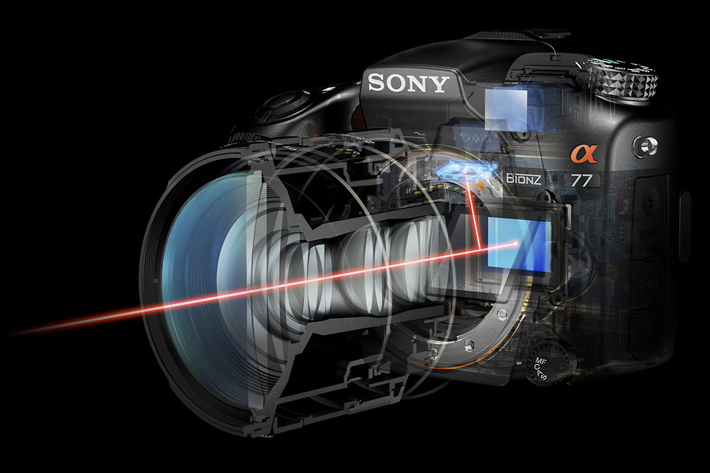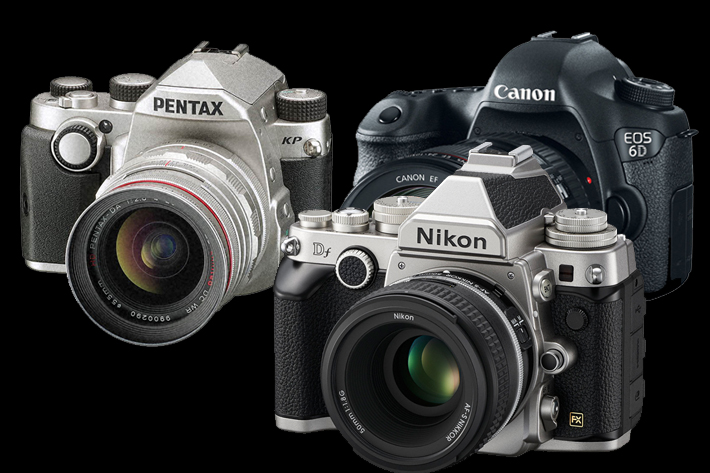
Introduced in 2006 to solve a problem DSLRs had at the time, the Single-Lens Translucent family of cameras, from Sony, may have had its last moment with the Alpha 99 II. If it is so, the system dies in a blaze of glory!
The recently launched Sony Alpha 99 II, which represents the top of the line for the SLT system, was a camera many never expected to see materialize. For a long time rumours that the Alpha SLT system was dead have appeared online. Users of the system felt abandoned by Sony, and the company did not do much to clarify all the doubts. Now, the launch of the Alpha 99 II puts an end to all the rumors. But may well be the end of the SLT line, as there is, apparently, no justification to keep it.
Before we continue, though, it is important to clarify a few things. Especially that the Alpha 99 II is not a DSLR, as many insist on calling it. Although the term DSLR is widely used in the market to designate different cameras, putting in the same bag Mirrorless and DSLR-like models, a DSLR continues to be a… DSLR.
Canon Nikon and Pentax are the only camera manufacturers offering 35mm and APS-C models of DSLR cameras. Said to be a dying breed, the DSLR continues to be around, and may even survive the demise of the Sony SLT, which seems to have ended on a high note.

Browsing through the lists of best DSLRs for 2017, I continue to be surprised – maybe I shouldn’t – to find in those lists models as the Sony Alpha 99 or the Sony Alpha 68, which are SLTs, or even the Sony A7 IIS, which is an ILCE. It’s a disservice to Sony, that created the designations on purpose to differentiate their cameras and continue to see their models mixeds with a type of camera that is, many say, dying: the DSLR.
Furthermore, when I looked at listings for the best DSLRs for video or weddings, I found the nonsense continued. On a quick check online one finds the following models referenced as DSLRs – in the multiple lists checked – when they are not: Sony Alpha SLT-A58, Sony Alpha SLT-A68, Sony Alpha 77 II, Sony Alpha 99, Panasonic LUMIX DMC-GH4, Sony A7, Samsung NX1000. I also found strange designations, things like the Leica M-P (Typ 240) 24MP SLR Camera, the Sony Alpha SLT-A77 Translucent Mirror Digital SLR Camera and other curiosities.
The quantity of acronyms and designations created, in recent years, does not help much to keep track of everything, but why do writers, blogers and the public have to create even more confusion mixing different types of cameras under the same listing without explaining, in a clear voice, what they are talking about?
I understand that it is difficult to keep Sony away from some of these listings, as their SLT models look much like SLR, but Sony quit the DSLR market in 2008. For those that seem to forget it, Sony entered the DSLR market in 2005 when it bought the assets from Konica Minolta. Between 2006 and 2008 Sony was the fastest growing company on the DSLR market, becoming the third largest DSLR company in the world, with a 13% market share. Not surprising, though, as it simply retook the place that Konica Minolta (previously only Minolta) had, right after Canon and Nikon.
In 2008, though, Sony stopped producing DSLRs, and created a new type of camera, the SLT (or DSLT) a Sony proprietary designation meaning Single-Lens Translucent. Those cameras, with a DSLR-like shape, employ a pellicle mirror, electronic viewfinder, and phase-detection autofocus system. Although using the same A-mount as the early Alpha DSLR, they are a new product that Sony wants to be different.
When we talk about DSLRs, people tend to refer to them as a dying breed. In fact, we’ve heard, for more than a decade, that DSLRs “will die soon”, although, and that’s a funny aspect of the whole story, most brands of mirrorless cameras – and others – look DSLR-like, as if that’s the best shape to use for marketing purposes. Forgotten is the fact that the hump for the mirrorbox and pentaprism or pentamirror was, according to some, inesthetic and could be removed and other design changes suggested. From Fujifilm X series to Olympus (which first promised to “kill” the DSLR) the DSLR-like shape seems to be the goal.
One type of camera that seems to be about to vanish from the market is the SLT. In fact, Sony’s A99 II, which DPReview called the “ultimate SLT”, may well also be the last. If there is any doubt about that possibility, one only has to look at the recent developments in the A series from Sony. Since 2013 that rumors about SLT technology being discontinued appear everywhere, with users doubting that any new SLT model would come out, and while the A 99 II is really a top of the line SLT, as multiple reviewers indicate, it does have some problems in terms of video, a good reason for Sony to drop the system. It should be noted that the SLT system, which uses a semi-transparent fixed mirror to divert a portion of incoming light to a phase-detection autofocus sensor, was a solution needed at the time, but makes no sense now, that digital sensors have integrated phase-detection.
So, the SLT Sony Alpha 99 II may be the “swan song” of a dying breed, which served its purpose for a period of 9 years. Still, the other Alpha models from Sony use a DSLR-like shape, confirming that the DSLR memory, even if only in shape, will continue to be part of the market.
The recent news from Nikon, a declaration of additional “extraordinary loss,” created rumors that Nikon was about to end. Tom Hogan, a popular name when it comes to understanding the Nikon world, wrote recently, regarding the loss, that “this was expected, though the level of it is slightly higher than expected” and while considering that the cancellation of the DL model line was unexpected he says that there are no real reasons to worry about Nikon’s future. Hogan says he is still looking at the numbers, but adds that Nikon lost ILC market share in 2016, still “their claim that it’s the declining market that defines their problem is not exactly true.”
According to Tom Hogan, “Nikon is declining faster than the market in ILC, their primary brand driver. Coupled with no decline by Canon during the same time period, and we have a return to the 90’s: Canon has about half the ILC market, and Nikon about half of the remaining half “. It’s an interesting analysis to read and compare with the latest reports, which show that Sony camera sales are down from 1.8 to 1.6 Million units.
One other aspect that Tom Hogan mentions and which interests me here is the comment that “every serious shooter I know—every darned one—wants a camera that works the same as, uses the same accessories as, and functions the same as their main DSLR camera. But it must be compact and thus able to fit in a small bag or even a jacket pocket so as to be carried everywhere.”
This reflects, probably, one of the reasons why DSLRs continue to be so popular: users want their compacts to work as DSLRs. In fact, that’s something that guides Canon, it seems, in terms of design. The company has been trying to make its mirrorless system and even the top of the line compacts offer menu systems and control of functions similar to its DSLRs. This has advantages, has users can move up and down within the system and not feel lost. That’s, as Tom Hogan, mentions, something Nikon mentionned about their DL line, which were presented as “compact for a DSLR shooter”.
Tom Hogan’s plan for Nikon suggests that the company should kill part of its lines of cameras, but still keep the DSLRs, both DX and FX, along with three serious compacts offering high performance. He may well be in tune with what Nikon may be preparing for the next years. But whatever Nikon does, DSLRs will continue to be a core element of its business.
We may even see Olympus return to the DSLR market. I know this final note may rage some readers, but the words are not mine, but from Olympus’ SLR products planning manager Toshi Terada, who in 2014, in an interview published by Amateur Photographer magazine, said this: “Nobody knows 10 years away… once we can get a very nice share [in mirrorless] we may expand the business to DSLR again, but at this moment we are just concentrating on mirrorless and we have no plan to go into DSLR.”
Apparently, everybody – still – loves DSLRs. Many even call other camera types… DSLRs!

